Photo


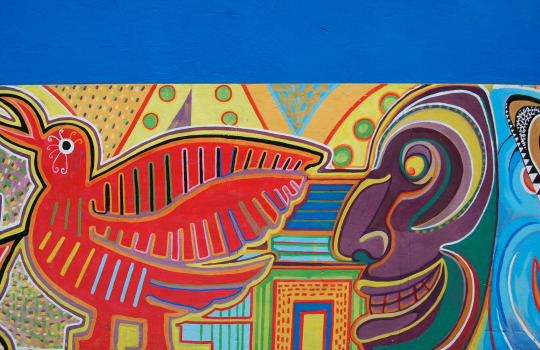
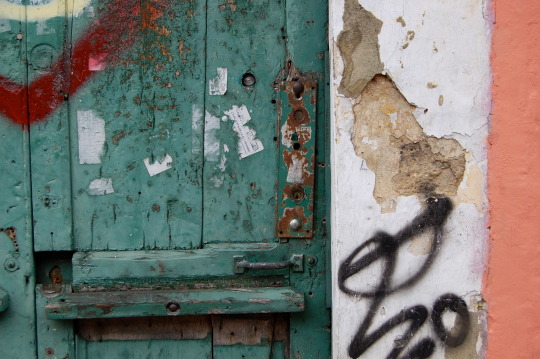


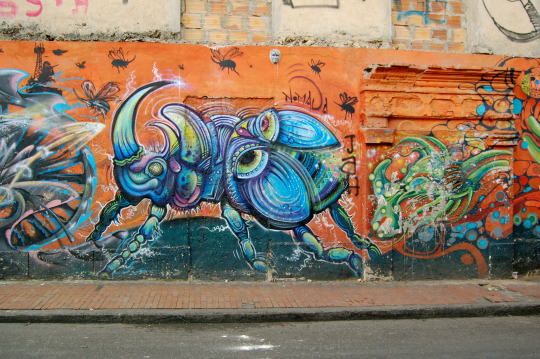

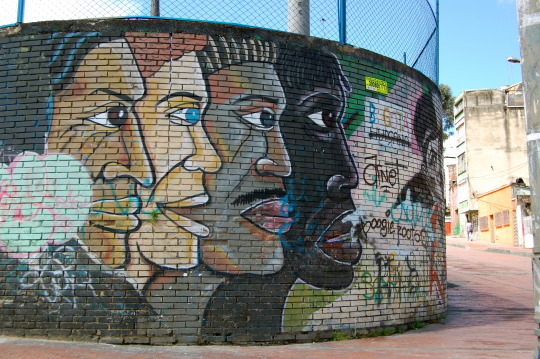
La Candelaria, Bogotá, Colombia
9 notes
·
View notes
Photo
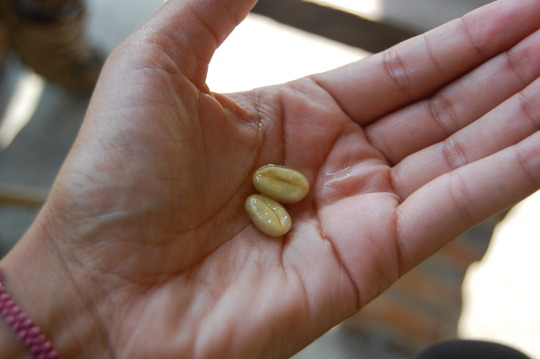

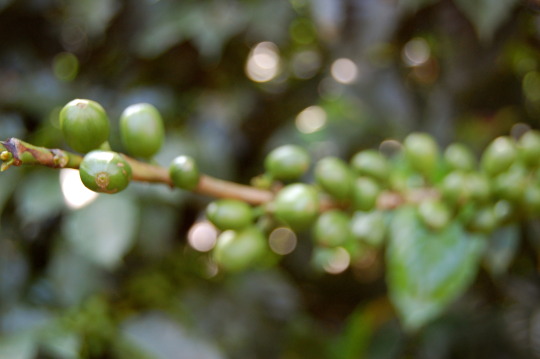
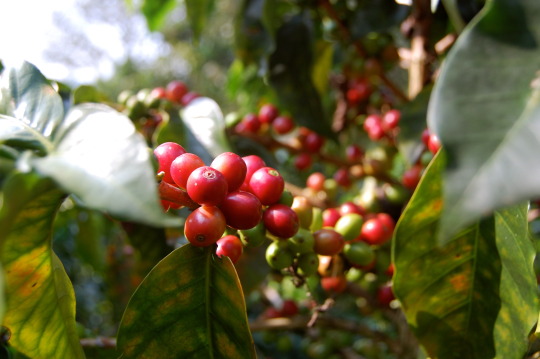
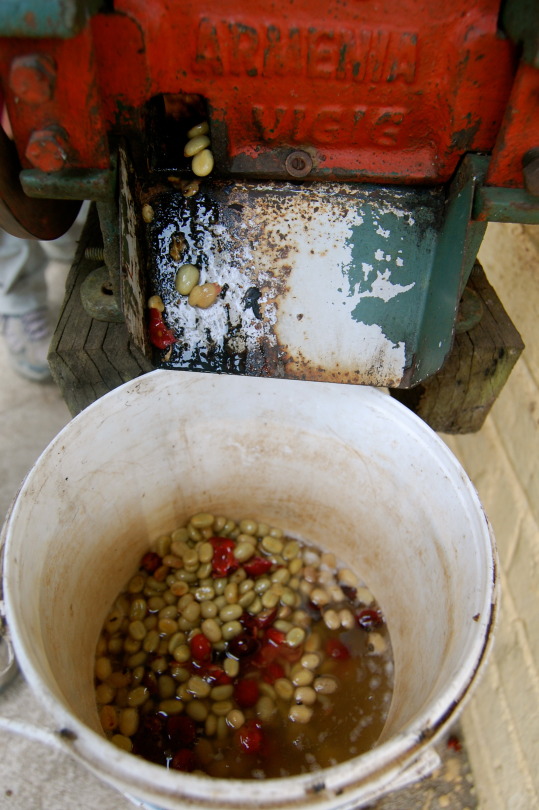

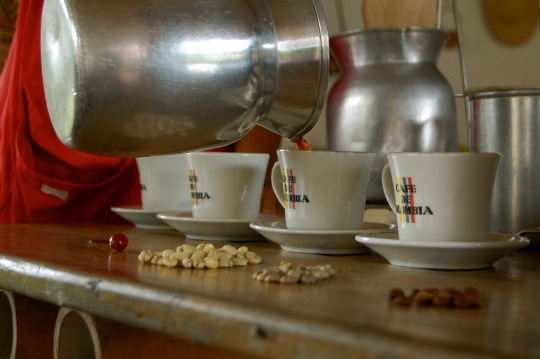

Photos by Shakia Stewart
123 notes
·
View notes
Text
Colombian Coffee
Colombia is the third largest producer of coffee in the world after Brazil and Vietnam. After spending a day hiking through the stunning Valle de Cocora and marvelling at the beautifully tall and slender wax palms that are the national tree and symbol of Colombia, we decided to take a closer look at the best produce this part of the country had to offer.
We walked to a coffee farm about an hour and a half outside of the small town of Salento. Here we learnt about the coffee making process from start to finish.
Beginning with the planting of the coffee seeds, the shoots take 60 days to appear. Ten days after the shoots have grown out of the ground is when the very first leaves start to show. It is then that the shoots are individually bagged and then left to grow for six months before they are planted in the ground.
18 months later they flower for the first time. Coffee plants don't need any extra help from birds or wind to inseminate; they are hermaphrodites. Nine months later and the flowers begin to drop off leaving behind the first coffee beans.
Depending on how good your maths is, you might have already worked out that it takes some three whole years before the first coffee beans have been produced. THREE whole years! After this the plants produce beans twice a year, and remain productive and of suitably high quality for about 20 years in total.
The beans are picked by hand. The red coffee type is ready to harvest when the beans are a deep cherry colour. The coffee pickers wear baskets around their waist which can hold up to 10kilos of beans!
Now here's some more maths for you...
Each kilo of beans picked is worth about 400pesos. On a good day - with a good picker and a good harvest - the amount of kilos picked is around 120. That's 48,00 pesos, or £15. I was shocked when I first heard the numbers, but when considering the average worker in the Colombian countryside gets paid 20,000pesos a day, the coffee pickers are actually doing pretty well.
Once the beans are picked, the skins are removed and the insides are dried for five to ten days - naturally out in the sun during the low season, and in the oven during the high season. With a waste-not, want-not attitude, the leftover skins are what's used to fuel the hot air in the ovens. The beans are then manually sorted into lower and higher quality groups.
Only 30% of the high quality coffee actually stays in Colombia. This is why you might be surprised when you order a coffee with breakfast in one of the most famous coffee regions in the world and it doesn't taste half as good as what you might get back home! The beans also tend to be over roasted, to compensate for their poorer natural flavour. The overwhelming majority of the high quality beans is exported outside of the country, mainly to Europe and the United States. There are groups trying to change this and keep more within Colombia. I hope they succeed, because the real deal, top quality coffee that we tasted at the end of the tour was absolutely delicious! And the Colombians themselves surely deserve to be drinking it just as much as we do.
----------------------------------------------------------------------------------------------
How to: We went to Finca El Ocaso, an hour to an hour and a half's walk out of Salento. We got easy to follow directions from Hostel Tralala. 8,000pesos each for the tour which lasted around one hour. A jeep back to town was 24,000pesos for the whole jeep (but we managed to squeeze 8 people in!). Coffee made on the farm was available to buy, from 6,000 pesos for 125g.
(3,000pesos = approx. £1)
#Colombia#Colombian coffee#coffee#coffee farm#Salento#coffee region#travel#traveling#south america#latin america#backpacking
1 note
·
View note
Photo
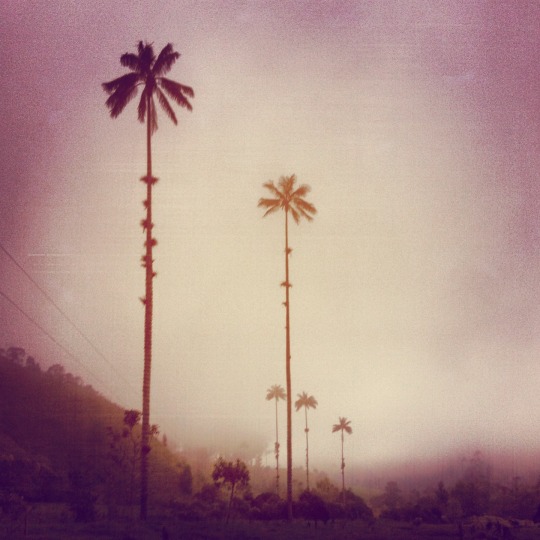
Wax palms in the Valle de Cocora, Salento, Colombia.
----------------------------------------------------------------------------------------------
How to: We took a jeep from Salento to Cocora, about 45 minutes, 3,000pesos each. They all leave at the same time. We left at 9.30am, but I was told they also left at 7.30am. The last ones back were at 6pm. We hiked through the valley with my 84-year-old grandma who has come out to visit for a couple of weeks. What an absolute trooper. It took us 7 hours in total for the round trip, but you could do it in 5.
We came from Bogotá, 8hours bus to Armenia, 51,000pesos (possibly more expensive due to Easter Week), followed by one hour bus from Armenia to Salento, 6,000pesos.
Accommodation: We stayed at Hostería Las Nubes, 45,000 each including cooked breakfast (again, higher prices for Easter Week). Beautiful place but no wifi.
Photo by Shakia Stewart
0 notes
Photo

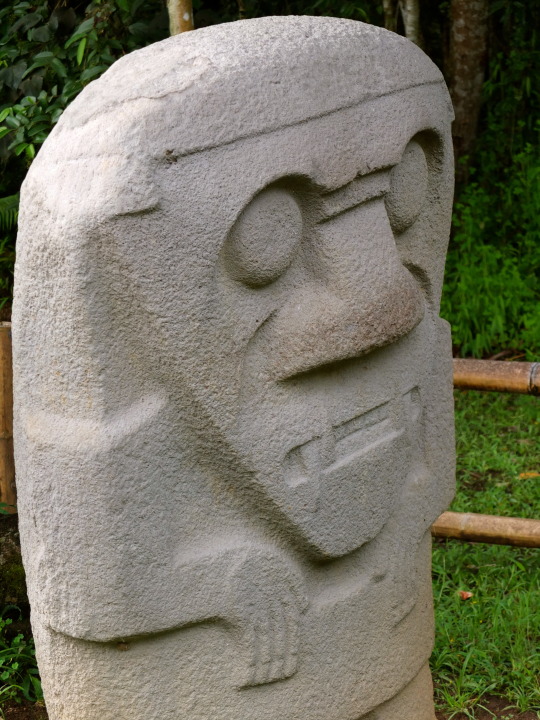


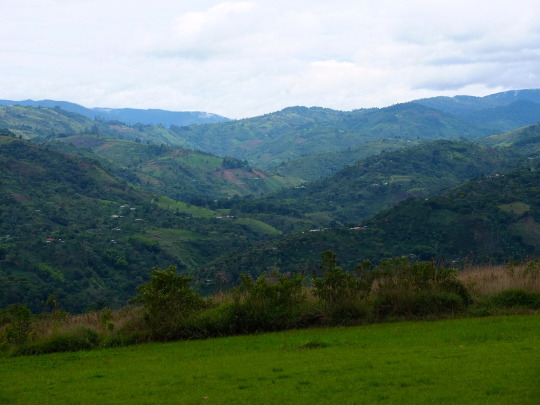
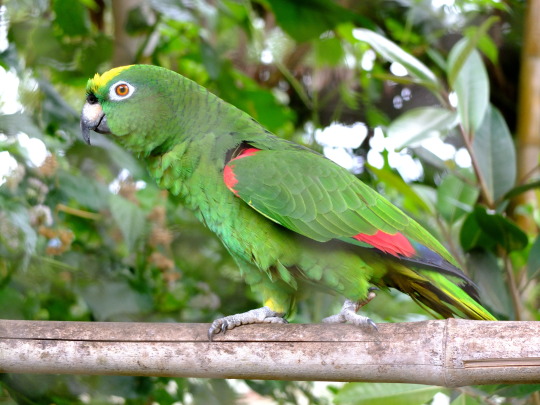
San Agustín
Lush green mountains, awesome stone sculptures, a gorgeous hostel with delicious communal meals, a very special someone’s birthday and parrots that talk. ¿Quiere cacao? San Agustín gets a double thumbs up.
----------------------------------------------------------------------------------------------
How to: We took an insanely bumpy bus from Popayán to San Agustín with Cootranshuila, 30,000pesos, 4hours.
Accommodation: Hostel Casa de Nelly, beautiful hostel up on the hill just outside of town. 50,000pesos double room, shared bathroom. 15,000pesos for delicious two-courses communal dinners.
(3,000pesos = approx. £1)
Photos by Pascoe Lintell
#san agustin#colombia#south america#latin america#travel#traveling#backpacking#nature#mountains#parrot
1 note
·
View note
Photo

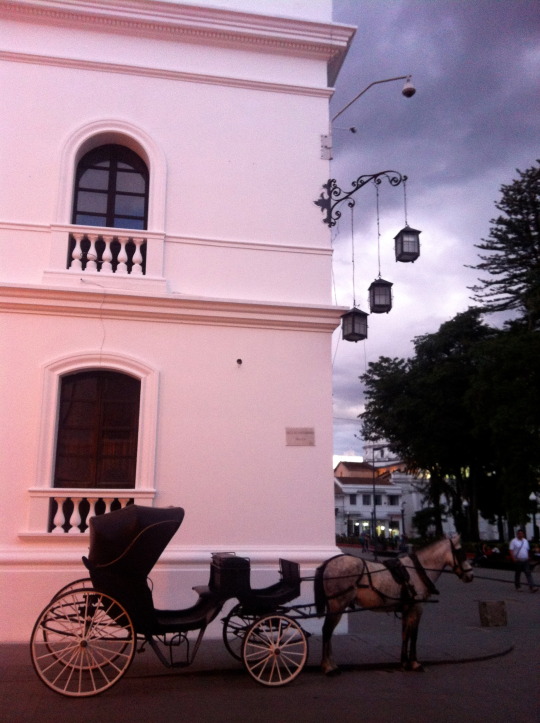

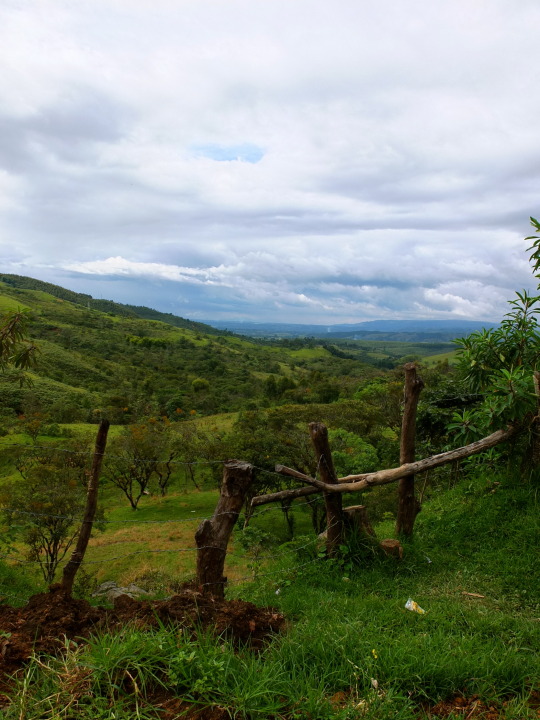
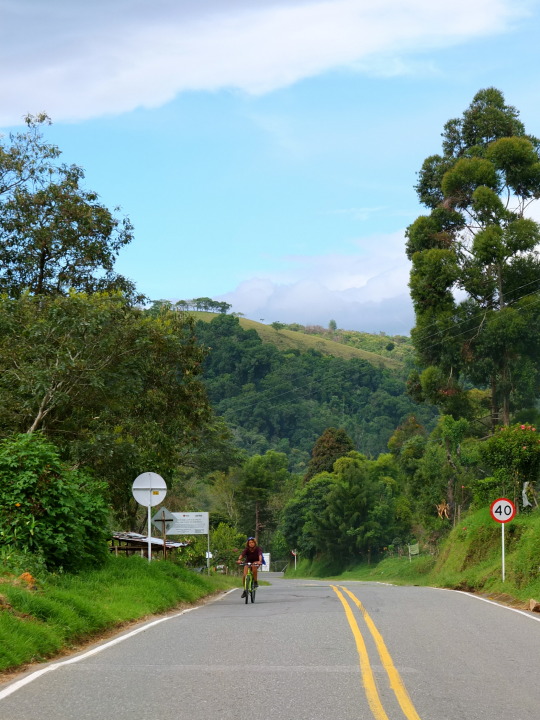
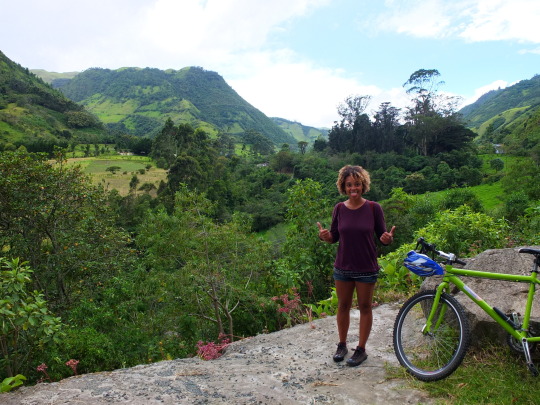

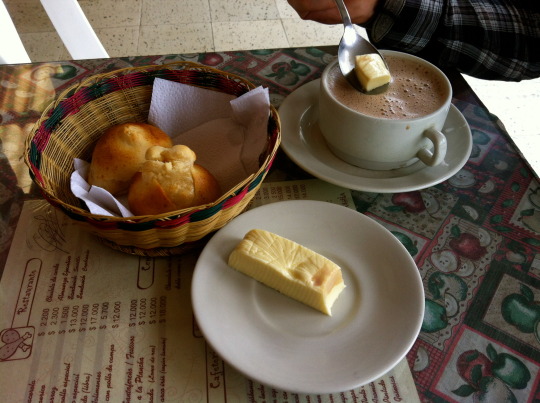
Photos by Shakia Stewart and Pascoe Lintell
#colombia#popayán#bike riding#hot chocolate#travel#traveling#south america#latin america#backpacking
9 notes
·
View notes
Text
Thank gosh for Popayan
Smelly, busy, ugly, dirty, expensive - no, thank you. Our first night in Colombia had not been so pleasant, as we holed up in the cheapest hotel we could find in the town on Pasto after crossing the border that day from Ecuador. We’d been planning on visiting Laguna de la Concha, an apparently unmissable lake an hour or so from town, but after a dinner of the driest chicken I have ever had the misfortune of eating accompanied by even drier potatoes (no sauce...why is there never any sauce??) we couldn’t bear to stay another night. Not much gets us up early in the morning, but we were packed up and on our way on a bus out of there by 9am the next day!
And on to much better things...
We arrived in Popayán some six hours later, following the windiest bus ride of our travels to date. But it was worth it. This was more like it! Narrow colonial streets, whitewashed buildings, a clean and welcoming main square, a lovely hostel that didn’t cost an arm and a leg and restaurants with real food in them...huzzah!
The highlight of our stay in Popayán was a (mostly) downhill bike ride through the mountains following a session in the thermal baths, past the indigenous village of Coconuco where we stopped for a great set menu lunch for only 4,000pesos, and back to Popayán. Spectacular views, and a hot chocolate with cheese (mmhm!) at the end to look forward to.
----------------------------------------------------------------------------------------------
How to: We took a bus from Pasto to Popayán for 25,000pesos, 6hours. There was a more expensive option for a shuttle bus for 40,000pesos, 4.5hours.
Accommodation: We stayed at Hostel Caracol. 45,000pesos double room, shared bathroom and communal kitchen. Lovely, chilled place. Sister hostel to HostelTrail, through which we booked the bike tour. 40,000pesos including drive up to hot springs and entrance.
(3,000pesos = approx. £1)
#colombia#travel#traveling#south america#latin america#backpacking#pasto#popayán#bike riding#hot springs#hot chocolate
1 note
·
View note
Text
Adios, Ecuador y Hola, Colombia
Despite being one of the smallest of South America's countries, Ecuador was a country that just kept on giving. From sea turtles and sharks, to iguanas and frigate birds. Crystal clear blue seas to rocky waterfalls and canyons. Volcanoes galore and totally rad waves to surf. Crater lakes and yoga on the beach, mountain bike riding and galloping horses. Churches and chocolate and coconut curries. Hot springs, Inca ruins, and some of the most friendly, welcoming people we have had the pleasure of spending our time with. So thank you, Ecuador. You have certainly not disappointed!
And so the adventure continues.
Hola, Colombia - how very nice to see you again...
2 notes
·
View notes
Photo
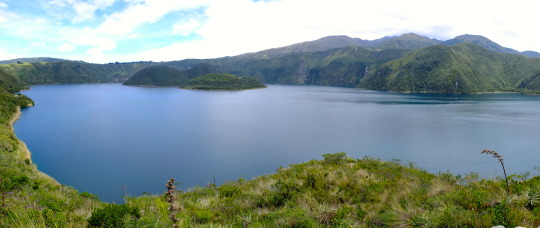
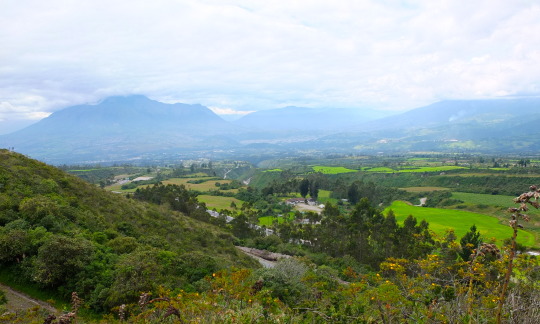

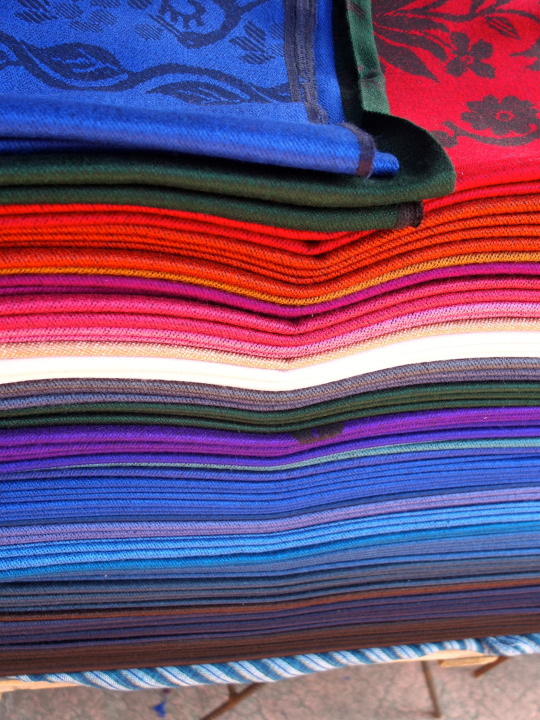
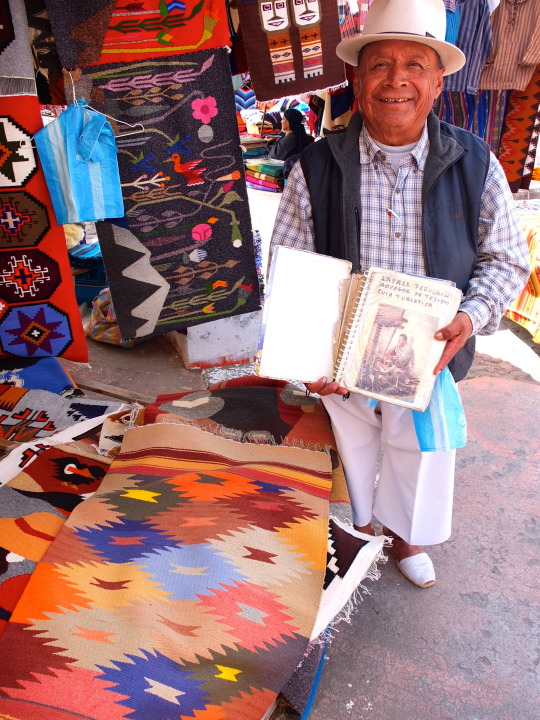
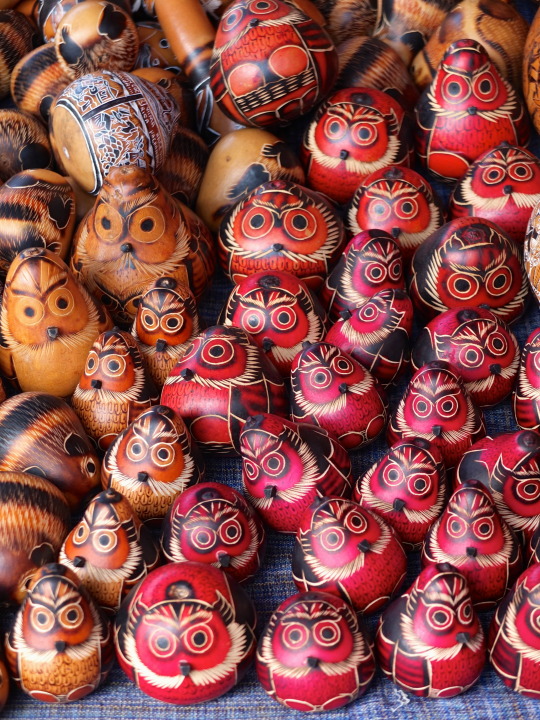
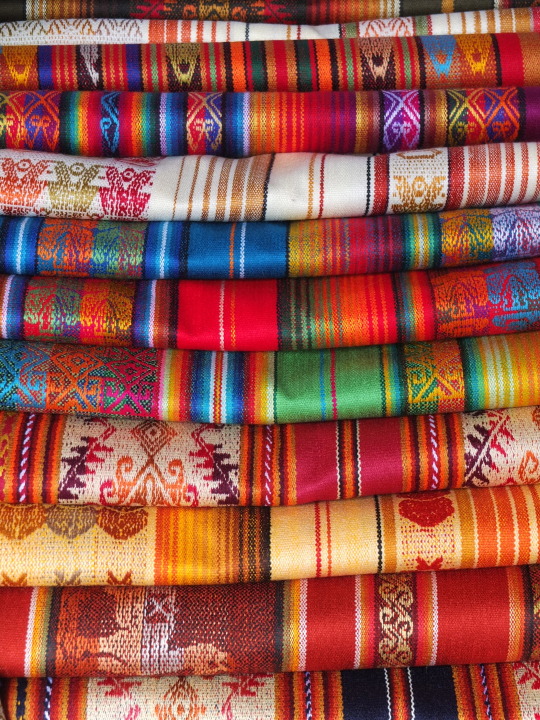
Photos by Pascoe Lintell
#Otavalo#Ecuador#travel#traveling#backpacking#south american#latin american#market#shopping#textiles#fabrics#colours#cuicocha#volcanic crater lake#cotacachi
15 notes
·
View notes
Text
Otavalo - more than just a market
The town of Otavalo, some two hours north of Quito on the road to Colombia, is famous for its Saturday market. But there is so much more to Otavalo and the surrounding area that it is well worth staying for more than just a day for shopping.
Visit Cuicocha, a volcanic crater lake at the foot of Cotacachi volcano that has no bottom! During the Inca Empire, women would take a boat to the other side of the lake and the men, in search of a wife, would have to swim across as fast as possible. Those who arrived first would get first pick!
The town of Cotacachi is famous for it's leather works, whilst nearby San Antonio is renowned for its famous wood sculptor Luis Potosí. You can visit his impressive workshop/gallery, where you're likely to get the chance to meet the charismatic man himself.
In nearby Ibarra, you can visit the site where Simon Bolivar fought his only battle in Ecuador.
Not to mention the Inca ruins and hot baths which are open till 2am, so you can soak away under the stars....
----------------------------------------------------------------------------------------------
How to: From Quito, buses leave from the northern Terminal Carcelén, $2, 2 hours.
Crossing into Colombia: From Otavalo, walk north up the PanAmericana highway to the bus stop with a blue bus stop sign, just before the big hill. Buses stop here on the way to the border town of Tulcán. $3, 3hours. From here you take a taxi to the border for $3.50. You cross the border by foot. On the Colombian side, the taxi to the bus terminal is 7000pesos (around 3000pesos = £1).
Accommodation: We stayed at Hostel Rincón del Viajero. This was a lovely hostel with breakfast included and really nice rooms. The best thing about this hostel, however, was Christian - the energetic, enthusiastic and ever entertaining staff member who took us on a wild and hilarious full day tour around Otavalo and the surrounding towns for only $10. We laughed a lot and had a lot of fun. He also drove us to the hot springs for a midnight session, which was brilliant. Don't do Otavalo without him!
Top tip: The market runs on Wednesday too!! So beat the crowds and manic tourist groups coming to shop shop shop from Quito and head to Otavalo mid-week.
#Otavalo#Ecuador#travel#traveling#Cuicocha#volcano lake#Cotacachi#San Antonio#Luis Potosí#Ibarra#Simon Bolivar#Inca ruins#market#shopping#Otavalo market#latin america#south america
2 notes
·
View notes
Photo

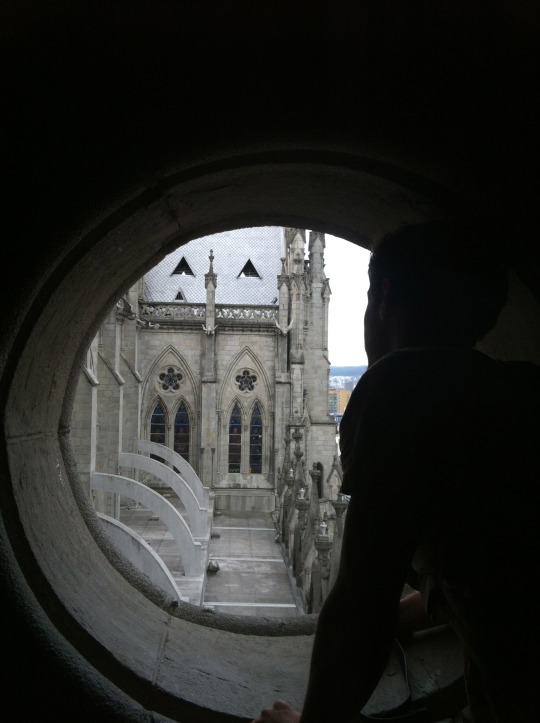

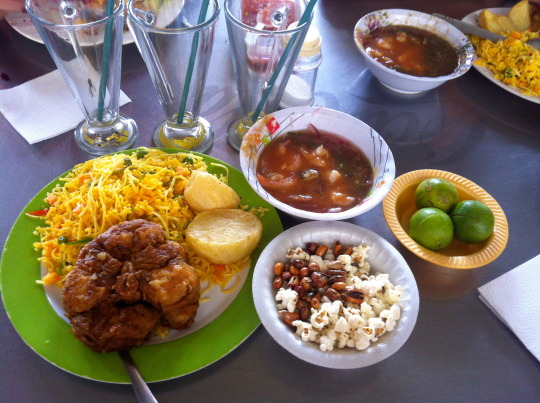
Photos by Shakia Stewart and Pascoe Lintell.
#Ecuador#Quito#food#Ecuadorian food#Basilica#Basilica del Voto Nacional#fried sea bass#corvina frita#travel#traveling#backpacking#south america#latin america
11 notes
·
View notes
Text
Quito
We were lucky to spend two days in the very often cloudy, highest capital in the world with mainly beautiful sunshine and clear blue skies. The views across the city which spreads out across a valley were spectacular from the turret of the beautiful neo-gothic Basilica del Voto Nacional, which you can climb to the top of via a rickety metal ladder which makes your knees wobble.
We'd gone to visit the Basilica on the suggestion of Ovi, with whom we'd taken a walking city tour that morning. If there is only one thing that you do whilst visiting Quito, be sure to go on a tour with Ovi. Charismatic, knowledgable and funny, and with awesome dreads down to his waist, over two and a half hours with him we found the best places to eat in the Central Market, saw the Ecuadorian president at the changing of the guards, walked around the old cobbled streets of the old town learning about the Quito School artistic tradition of the churches, tried delicious Ecuadorian sweets and learnt all about the making of chocolate before having a taste ourselves (although I must say, nothing will now ever compare to the chocolate we made ourselves in La Maná - I've been spoilt).
It was a great whistle stop tour of the highlights that Quito has to offer, and an interesting and useful insight into the history of the city and the country itself - from the colonial period to fighting for independence, the 'dolarisation' of the country in 2000 which was followed by the migration of many young people to Europe and the US in search of work, and Ecuador's present day growing and strengthening economic stability.
----------------------------------------------------------------------------------------------
How to: We took the bus from Latacunga on the way back from Quilatoa, 1.5hours, $1.50. A taxi from the bus station to the old town was $7.
Accommodation: We stayed at Community Hostel in the Old Town. $10 for a six person dorm, or $15 each for a double room. The breakfasts here are lovely for $2.50, and there is also a communal kitchen. The only downside is there are only two bathrooms for the whole hostel. It is from here that Ovi's tours leave every day at 10.30am, usually ending at Central Market where you can get a great lunch for very little.
Food: Try the fried sea bass (corvina frita) at the stall Las Corvinas de Don Jimmy in the market. Served with rice, salad, ceviche and hot sauce this is absolutely delicious - but there is enough to feed a small family so try and find someone to share with!
You can also try other typical dishes such as llapingachos, friend potato cakes, encebollados, a fish stew with cassava and red onion which Ovi insists are the perfect cure to any hangover, and the popular guatitas, a tripe stew.
#Quito#Ecuador#Basilica#Basilica del Voto Nacional#neo-gothic#walking tour#Ecuador history#Ecuadorian food#food#corvina frita#llapingachos#encebollados#guatitas#fried sea bass#tripe stew#potato cakes#fish stew#cassava
0 notes
Text
La mitad del mundo
Did you know? Standing right on the equator you weigh 1kg less, you can balance an egg upright on a nail, and water flows straight down the plug hole. And on March 21st and September 21st there are no shadows at noon for three whole minutes.
These are the spring and autumn equinoxes, and it is how the people living in Ecuador from around 500BC first came to know where the equator lay. Worshipers of the sun, they built temples along the equatorial line in honour of their God.
Then in the 18th century, a French man call Charles-Marie de La Condamin made measurements to find the equator, but his calculations left him around 240m out. You can visit the monument which lies along this line, the main attraction that is sold to tourists - but it's really not worth it.
The real equator actually lies through the Museo de Sitio Intiñan round the corner. It's here that you can try your hand at balancing eggs on nails, watch water go down the plug hole in different directions depending on whether you are standing in the Northern or Southern hemisphere, and walk along the equator with your eyes closed trying to stay balanced - much more fun and authentic!
Only an hour or so north of Quito (which means middle earth), you can also see real shrunken heads from the Amazon region and check out original stone double sided sundials (the side facing the Southern hemisphere works from September to March, and after the equinox the side that the sun makes a shadow on switches).
Make sure you wear sun screen! You're pretty darn close to the sun...
----------------------------------------------------------------------------------------------
How to: From Quito we took a bus from Los Túneles bus stop which went directly to La Mitad del Mundo - it will say on the front of the bus. 40cents each way.
Entrance to the French equator is $3 - don't do it! You can't even climb up the monument without paying another $3 once you are inside the park. A massive rip off.
Do visit the Museo de Sitio Intiñan. It costs $4 but with that you get a guided tour of the museum and you're shown lots of cool tricks on and around the equator line (which was officially measured with military equipment in 2000). Bring your passport if you want to get a stamp saying you've been to the middle of the world!
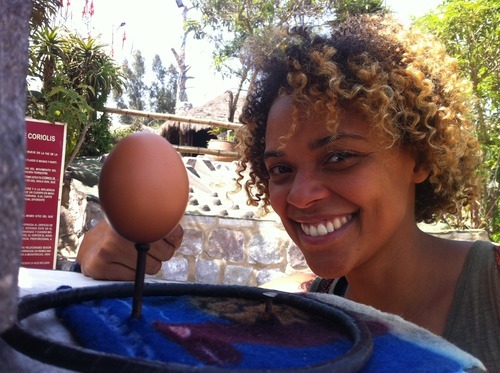
#Ecuador#equator#la mitad del mundo#Middle of the world#travel#traveling#Museo de Sitio Intiñan#sun#plug holes#water#gravity#south america#latin america#backpacking
1 note
·
View note
Photo
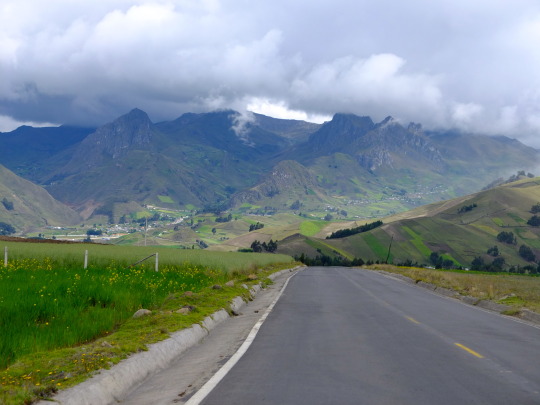






Photos by Pascoe Lintell
#Quilatoa#Ecuador#South America#Latin America#travel#traveling#backpacking#kayaking#volcano#volcano lake#crater lake
3 notes
·
View notes
Text
Quilatoa
At 4000m the view from the top of Quilatoa, the volcanic crater lake south of Quito, is literally breathtaking. It was created by the collapse of the volcano after an explosion around 800years ago which has since filled up with water.
You can walk round the lake in around four hours. Or even better, you can walk down to the lake and kayak on its beautifully crystalline, turquoise blue water.
We went down early in the morning, the sun was shining and we were the only ones out on the lake. Absolute bliss.
Heading down was a breeze, taking a leisurely 40 minutes. The way back up, however, was much tougher going! Still, we made it in about an hour and 10mins...but next time I might consider taking one of the horses on offer!
----------------------------------------------------------------------------------------------
How to: We took a bus from Baños to Latacunga, 2hrs, $2. Then in Latacunga we took a bus to Zambahua, $1.50, 1.5hrs. There we jumped in the back of truck for the last 12km, $2.50.
Coming back, from Latacunga we took the bus to Quito, 1.5hours, $1.50.
Accommodation: Hostel Pachamama, $15/night including dinner and breakfast. Really cosy, fireplace to huddle round in common area, free tea and coffee to warm up, lots of warm blankets in the rooms. Great place and 1minute from the top of the lake!
Alternatively, there is a hostel down by the lake from where you rent the kayaks. Rooms are $13/night with dinner and breakfast, and there is also camping. Only problem is if you go all the way down and they don't have any space, it's a long way back up with all your bags!
#Quilatoa#Ecuador#travel#traveling#backpacking#south america#latin america#volcano#crater lake#kayaking#volcanic lake
0 notes
Photo
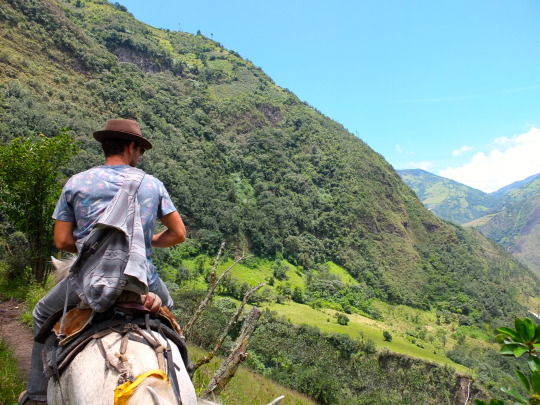

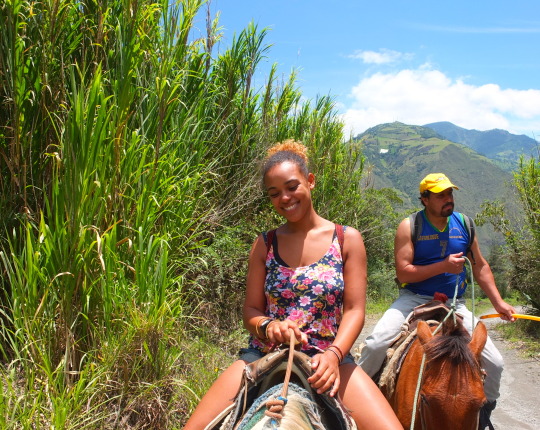
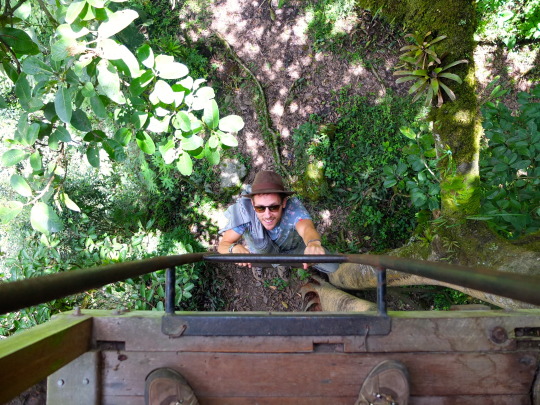
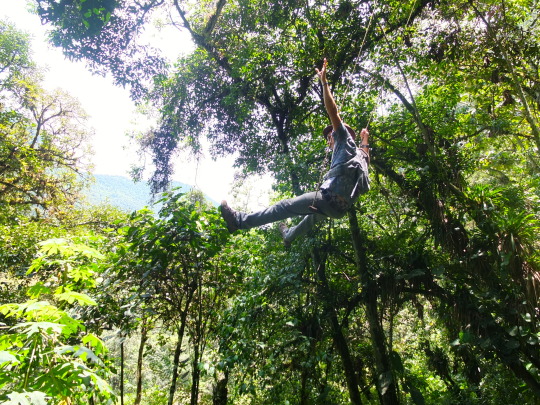
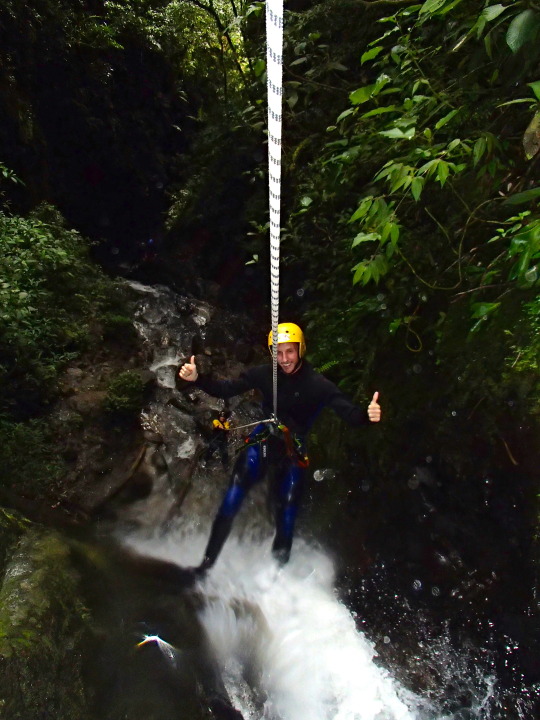


Photos by Pascoe Lintell and Natural Magic Travel Agency
#Baños#Ecuador#canyoning#horse riding#travel#traveling#south america#latin america#backpacking#mountains#waterfalls#horses
2 notes
·
View notes
Text
a little bit of adventure
Someone described Baños to us as 'Montañita without the sea'. Although it is very touristy, I think this was an unfair exaggeration. Where Montañita thrives on the rush from 2x1 cocktails and terrible house music, Baños gets it's kicks from outdoor adventure sports - and that makes for quite a different vibe!
Set in a valley surrounded by lush green mountains at the foot of Tungurahua volcano - which erupted just a week after we were there - the town is picturesque and pretty chilled.
Whilst there we went canyoning in the Rio Blanco, which was an incredible, physically demanding adventure. We also rode off into the mountains on horseback, to the foot of Tungurahua where we tasted the mineral rich volcanic water, climbed up a creaking tree house for a beautiful view over the river and swung through the trees on a swing nestled in the forest. Fab. Definitely worth a visit to explore for a few days!
----------------------------------------------------------------------------------------------
How to: From La Maná we caught the Cotopaxi bus to Latacunga, $3, 4hours. Then we took a bus to Ambato, 45mins, $1. Then a $2 taxi to different bus station - Mercado America- to get the bus to Baños, 1hr, 80cents.
Accommodation: We stayed in a lovely hostel called Hostel Plantas y Blanco. They have their own 'baños de cajón' or box steam baths which is a must. For $5 you get a 45minute session (or $12 for 3) during which a trained professional helps you alternate between steaming your body in the box amidst the delicious smell of eucalyptus leaves, and cooling down with cold water, including water massages. Pretty cool.
Tours: We did our canyoning tour with Natural Magic Travel Agency - $30 for a half day, fantastic guides, GroPro video and photos included.
We went horse riding with Alexander Tours, 4hours, $25. A great tour and great tour guide also.
Both tour companies are on Calle Luis A Martinez.
#baños#Baños#Ecuador#travel#traveling#latin america#south america#horses#horse riding#backpacking#canyoning#rio blanco#baños de cajón#tungurahua#volcano#eruption
1 note
·
View note